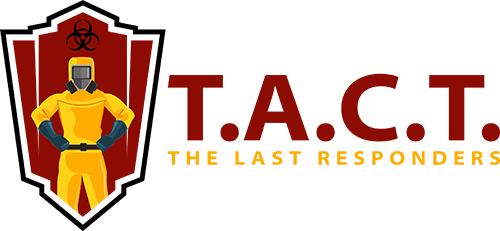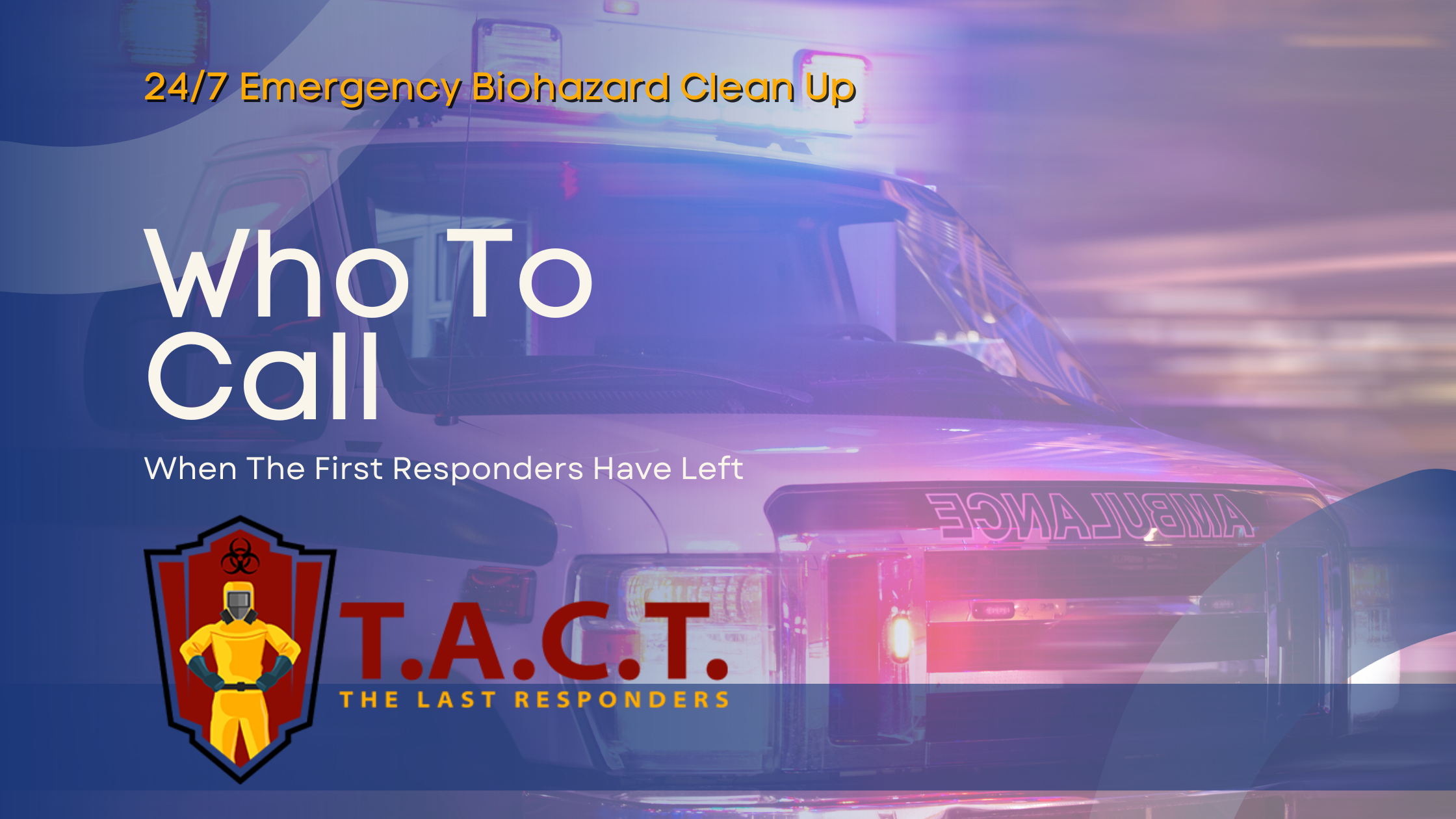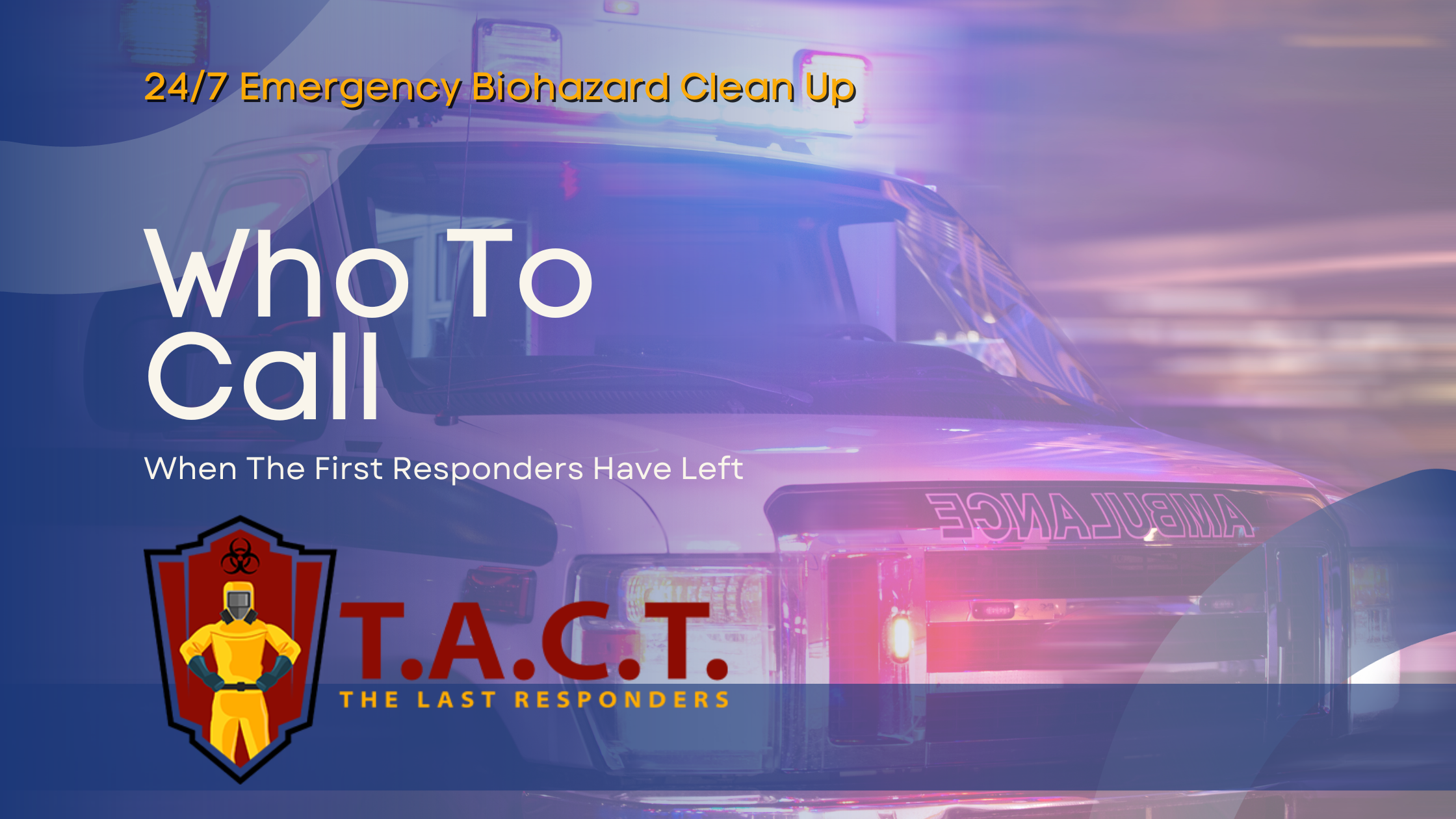How to get rid of rat droppings
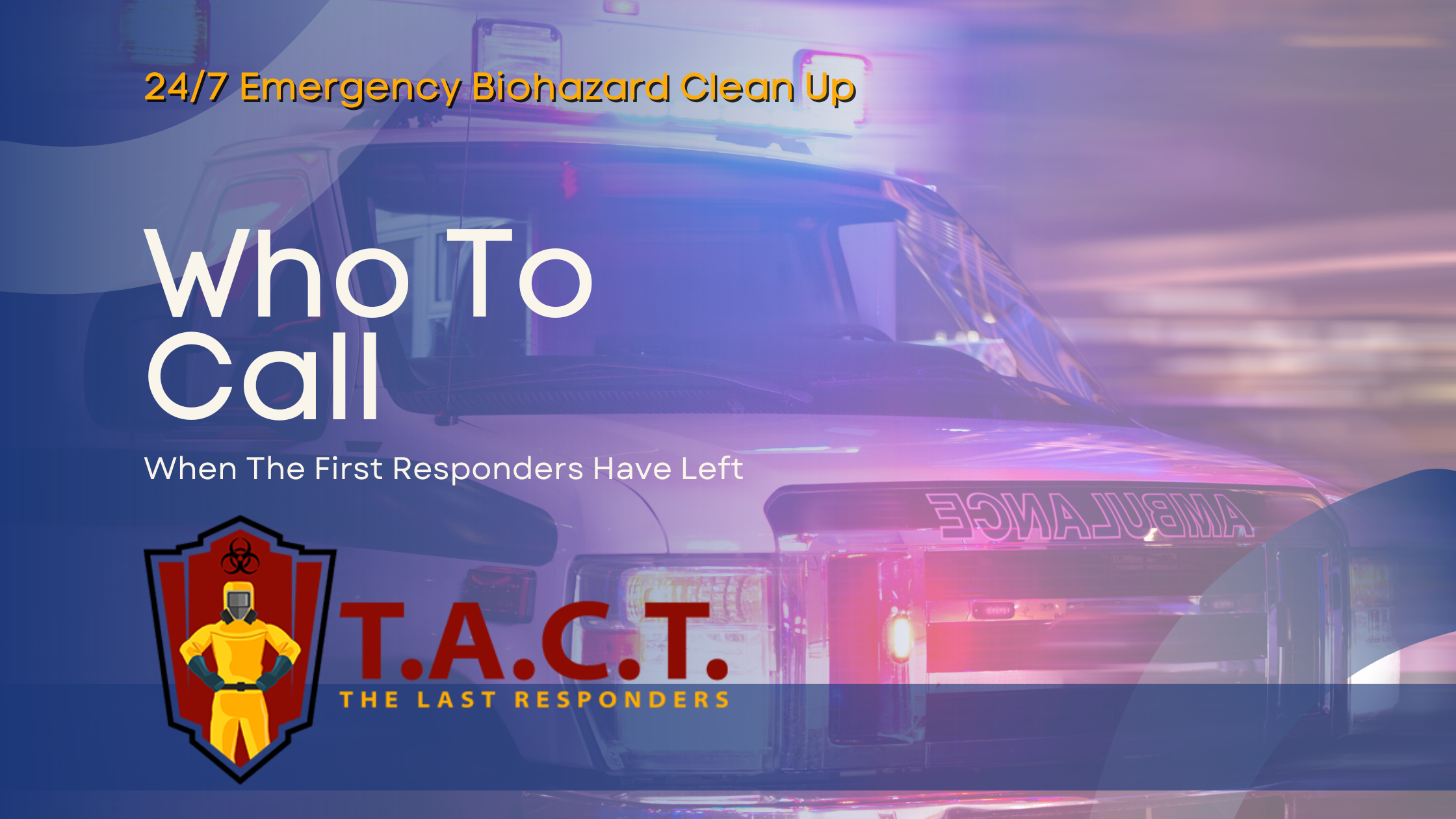
How to Get Rid of Rat Droppings: Effective and Safe Steps
If you’ve discovered rat droppings in your home, you need to clean them up quickly and safely. Proper cleanup is essential to protect yourself from potential health risks. In this article, we’ll guide you through identifying rat droppings, required safety gear, step-by-step cleanup, and how to get rid of rat droppings, disinfecting the area, and preventing future problems.
Key Takeaways
Rat droppings are larger than mouse droppings and pose significant health risks, including diseases like hantavirus and leptospirosis.
Proper safety gear, including gloves, masks, and disinfectants, is essential for safely cleaning and disposing of rat droppings and dead rodents.
Preventing future infestations requires sealing entry points, maintaining cleanliness, and using effective traps while being cautious with rat poison to avoid harm to pets and children.
Identifying Rat Droppings and Their Risks
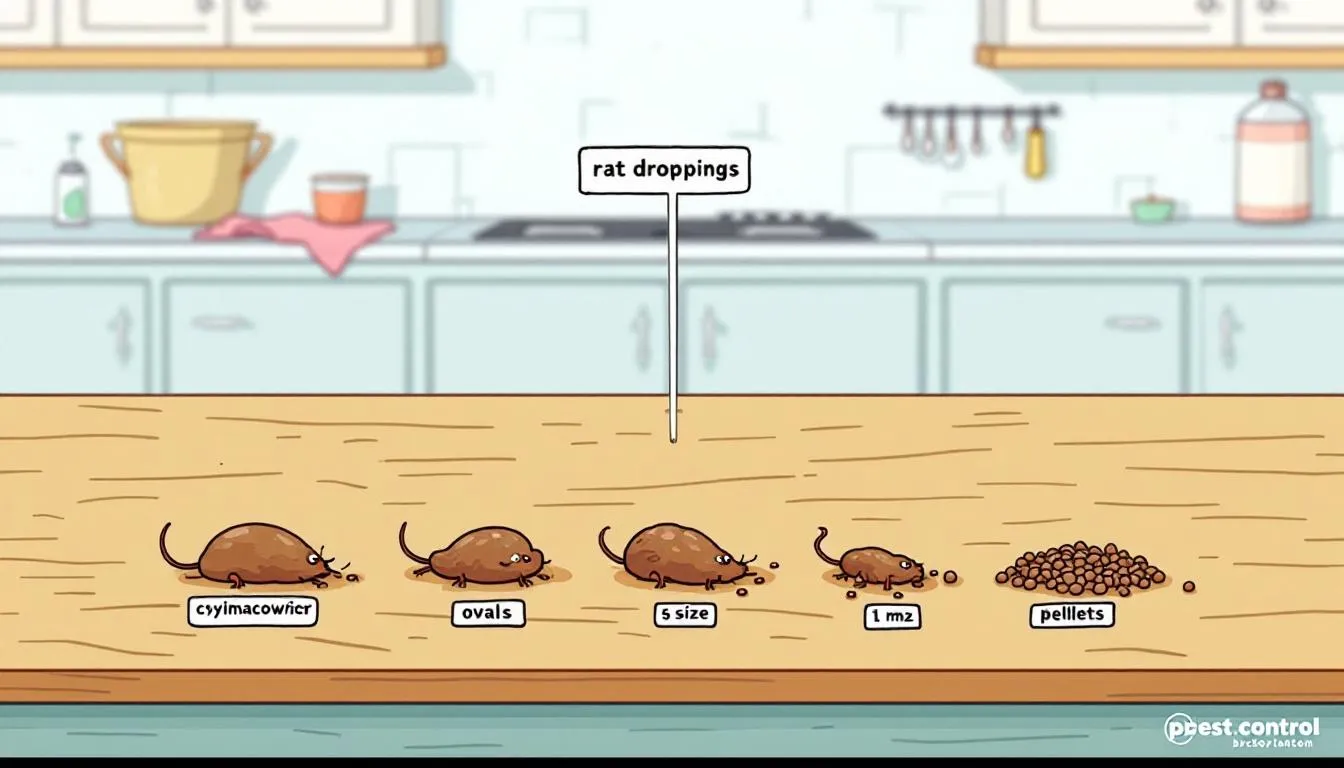
Begin by identifying rat droppings, which have the following characteristics:
Typically larger than mouse droppings, measuring about 19mm (3/4 inch) long
Have blunt ends
Dark brown in color
Shaped like grains of rice, including norway rat droppings. You can find rat droppings by observing these traits.
These features help distinguish them from the smaller, pointed droppings of mice.
Recognizing rat droppings also involves understanding the health risks they pose. These droppings can carry diseases such as hantavirus pulmonary syndrome and leptospirosis, posing significant risks to humans. Exposure can lead to allergies, exacerbate asthma, and cause serious health conditions. Rat poop dangerous can be a serious concern for those in affected areas.
The risks aren’t limited to direct contact; hantavirus can become airborne when contaminated droppings or urine are disturbed, heightening health risks during cleanup. Rat droppings indicate a rodent infestation that requires immediate attention to prevent further hazards and can carry hantavirus, especially if an infected rodent is present.
These risks highlight the need to address rat droppings and roof rat droppings promptly and safely. Let’s move on to the necessary safety gear and cleaning supplies for this task.
Required Safety Gear and Cleaning Supplies
Prioritize safety when dealing with rat droppings by equipping yourself with:
Rubber gloves
A filter mask
Goggles
Long-sleeved clothing
Rubber boots
Wear protective gear
These items help minimize exposure to harmful particles and pathogens.
Proper cleaning supplies are also crucial. Gather:
Household disinfectant
Paper towels
Plastic bags
A covered trash can
Prepare a bleach solution (1.5 cups of bleach with one gallon of water) for disinfecting the area after cleanup.
Having these supplies ready ensures an efficient and safe cleanup process. Now, let’s go through a step-by-step guide to safely remove rat droppings from your home.
Step-by-Step Guide to Safely Remove Rat Droppings
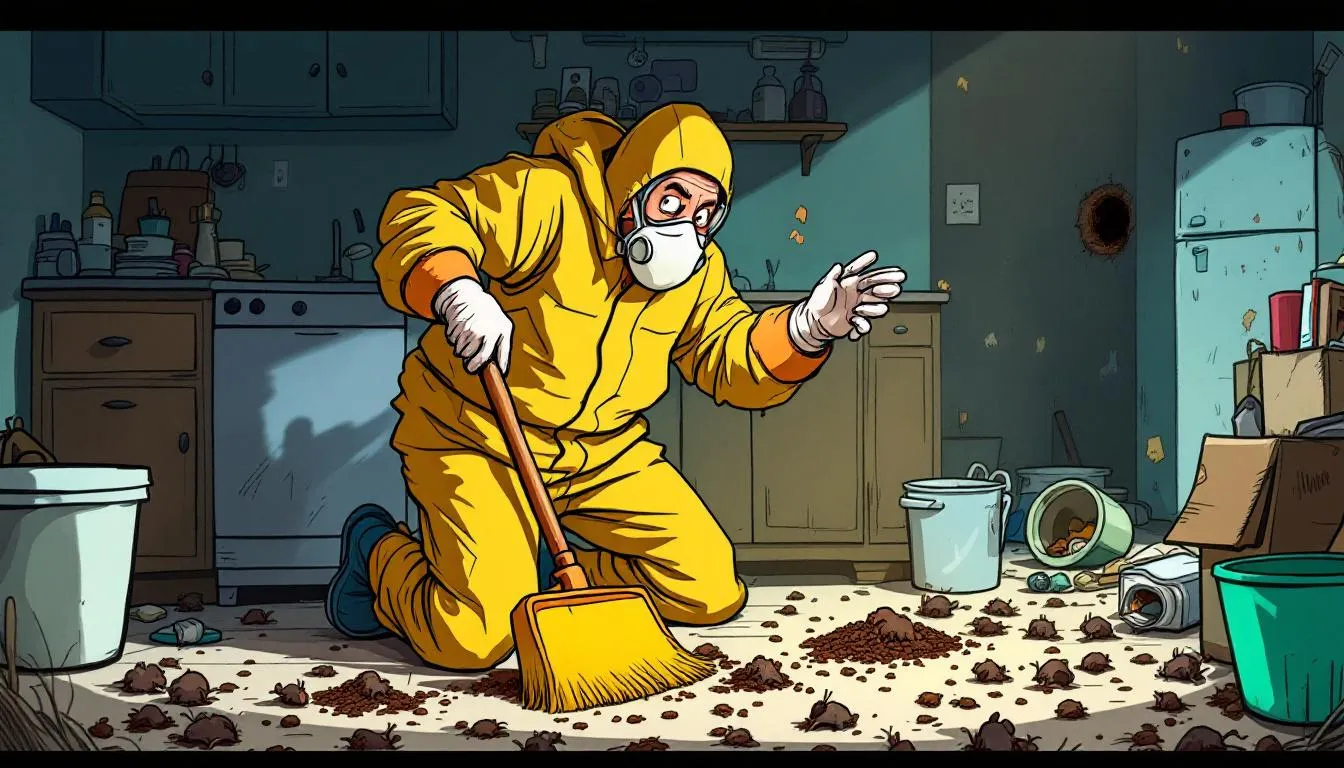
Preparation is key when cleaning up rat droppings. Start by ventilating the area for at least 30 minutes to disperse airborne particles, reducing the risk of inhaling pathogens. Then, dampen the droppings and debris with a bleach solution or household disinfectant to prevent dust and particles from becoming airborne.
To safely clean rat droppings:
Use a wet rag to clean or pick up the droppings, avoiding vacuum dry droppings or sweeping to prevent stirring up harmful particles.
Place the droppings and contaminated materials into a sealed plastic bag, double-bagging to ensure containment.
Dispose of the waste in a covered trash can to prevent exposure.
After removing the droppings, clean and disinfect the area thoroughly with a mop or sponge and the bleach solution. Focus on corners, crevices, and other areas where droppings might have been to ensure all traces of contamination are eliminated.
Finally, wash your hands thoroughly with soap and water to avoid any residual contamination. Proper hygiene is crucial in preventing the spread diseases from rodent droppings.
Disinfecting the Area After Removal
After removing the droppings, disinfect the area to get rid of remaining pathogens. Soak the area with a bleach solution (1.5 cups of bleach with one gallon of water) and let it sit for a few minutes to kill harmful bacteria and viruses.
Once the solution has soaked in, use a mop or sponge to clean the area thoroughly, ensuring all contaminants are removed. Be diligent in cleaning all surfaces, including floors, countertops, and any other areas where droppings were found.
Finally, wash your hands thoroughly with soap and water to remove any traces of contaminants. Proper hand hygiene prevents the spread of diseases after handling rodent droppings.
How to Dispose of Dead Rodents
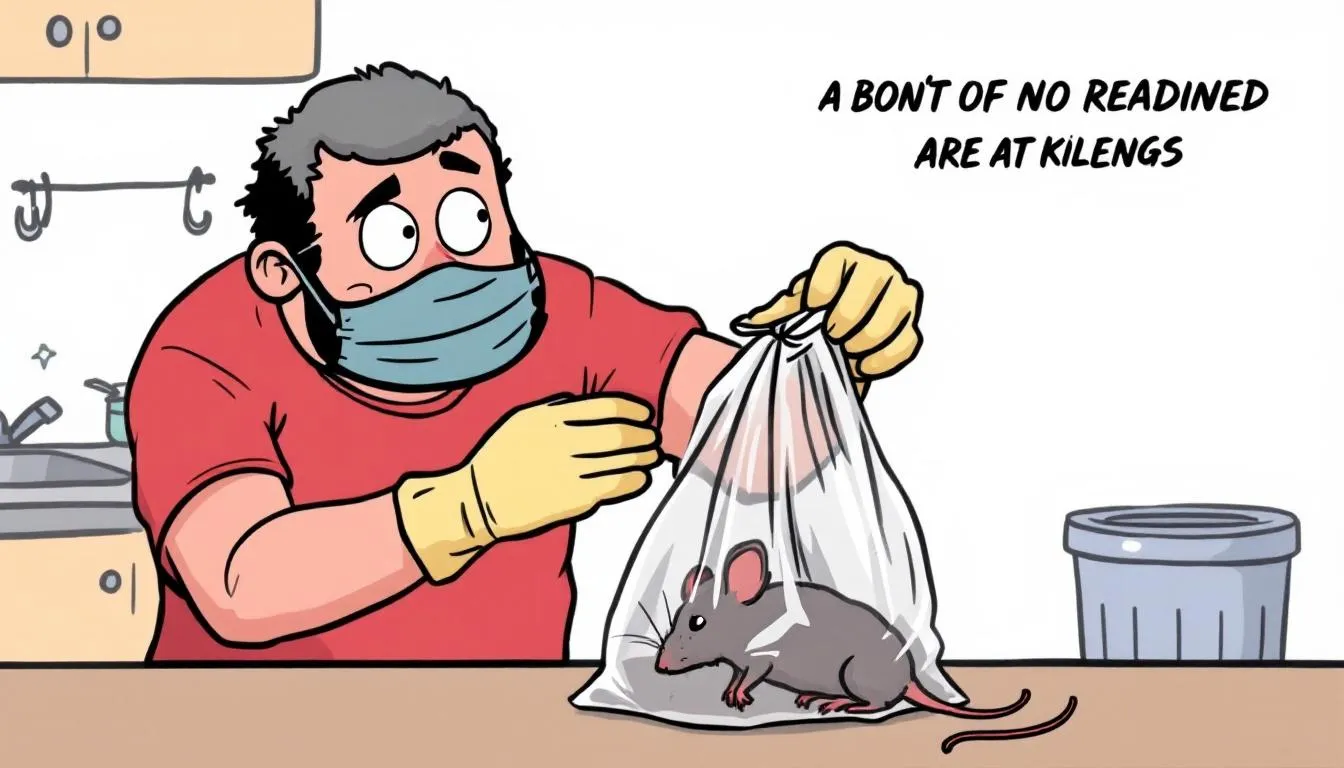
Handling and disposing of dead rodents requires special care. Wear rubber gloves and a dust mask to minimize exposure to harmful pathogens that may be present on the rodent’s body.
To safely dispose of a dead rodent:
Place the dead rodent in a sealed plastic bag.
Double-bag it to contain potential threats.
Ensure both bags are securely sealed.
Dispose of the sealed bags in a covered trash can to prevent exposure.
Proper disposal prevents the spread of diseases and helps ensure the infestation does not recur. Now, let’s discuss preventive measures to keep rodents from returning.
Preventing Future Infestations
Preventing rodent infestations is crucial. Seal all entry points in your home using materials like caulk and steel wool. Regularly inspect both the interior and exterior for signs of rodent activity.
Maintaining cleanliness is also important. To minimize attraction for rats and prevent rats:
Regularly clean kitchen waste using tightly sealed garbage containers.
Eliminate food and water sources near your home.
Keep surroundings free of nesting materials like leaf piles and mulch. Additionally, it’s crucial to get rid of rats effectively.
Adjust outdoor bird feeding practices to reduce food waste that attracts rodents. These preventive measures will help keep your home rodent-free and mitigate the risk of future infestations.
Using Traps and Bait Effectively
Effective use of traps and bait can help control rodent populations and prevent future infestations. Commonly used traps include:
Snap traps: deliver a swift kill by breaking the rodent’s back.
Glue traps: often lead to a slower death through suffocation.
Live traps: (description not provided in the text).
Place traps along walls and in areas with visible signs of rodent activity like droppings or gnaw marks. Glue traps are cost-effective as single-use options, whereas snap traps can be reused multiple times.
Effective use of rat traps can significantly reduce the rodent population in your home and help control rodents and prevent future infestations.
The Dangers of Using Rat Poison
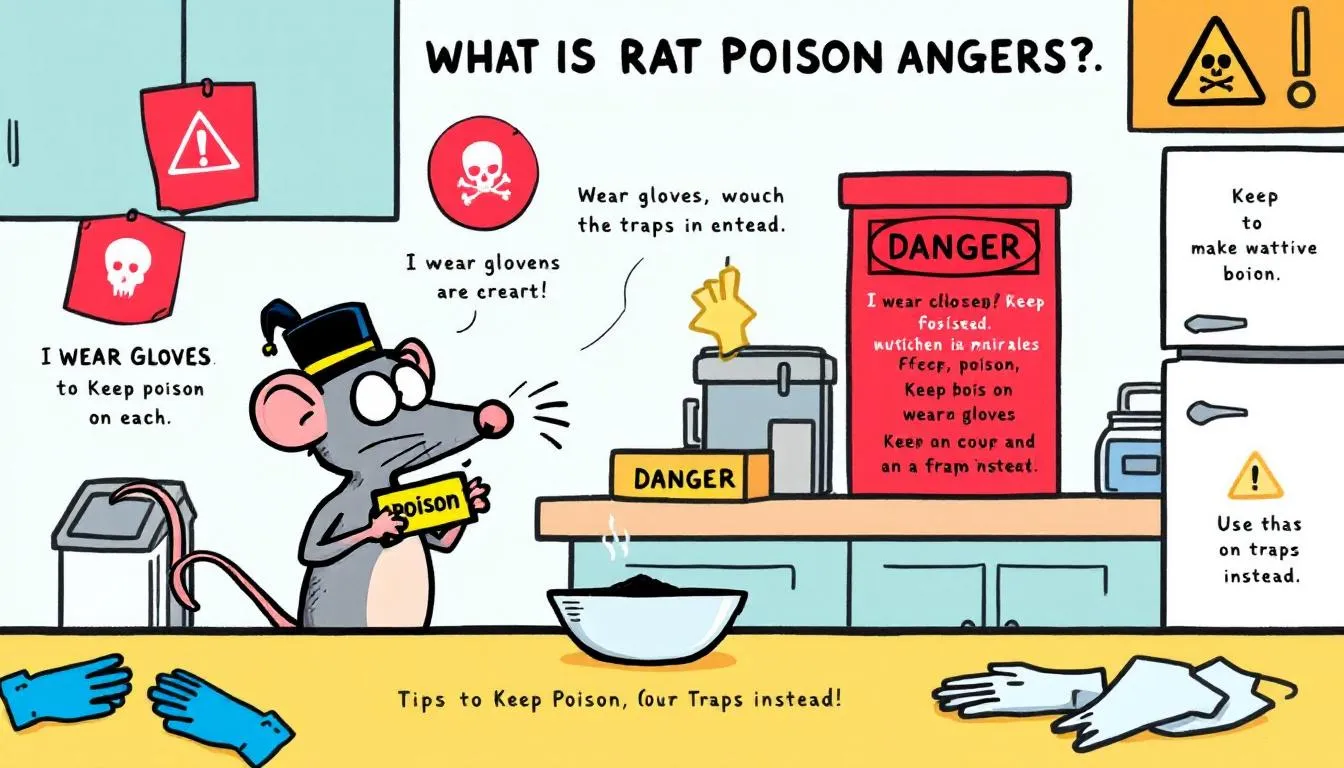
While effective, rat poison poses serious risks. Hidden deaths can occur if rodents consume poison and die in inaccessible places, leading to odor and attracting other pests. Moreover, rat poison can be harmful to pets and children if not stored properly.
Consider safer alternatives like traps to minimize risks to non-target animals and humans. Traps offer a more controlled and safer method of dealing with rodent control, mice and rats, and rodent infestations.
Health Implications of Rat Droppings
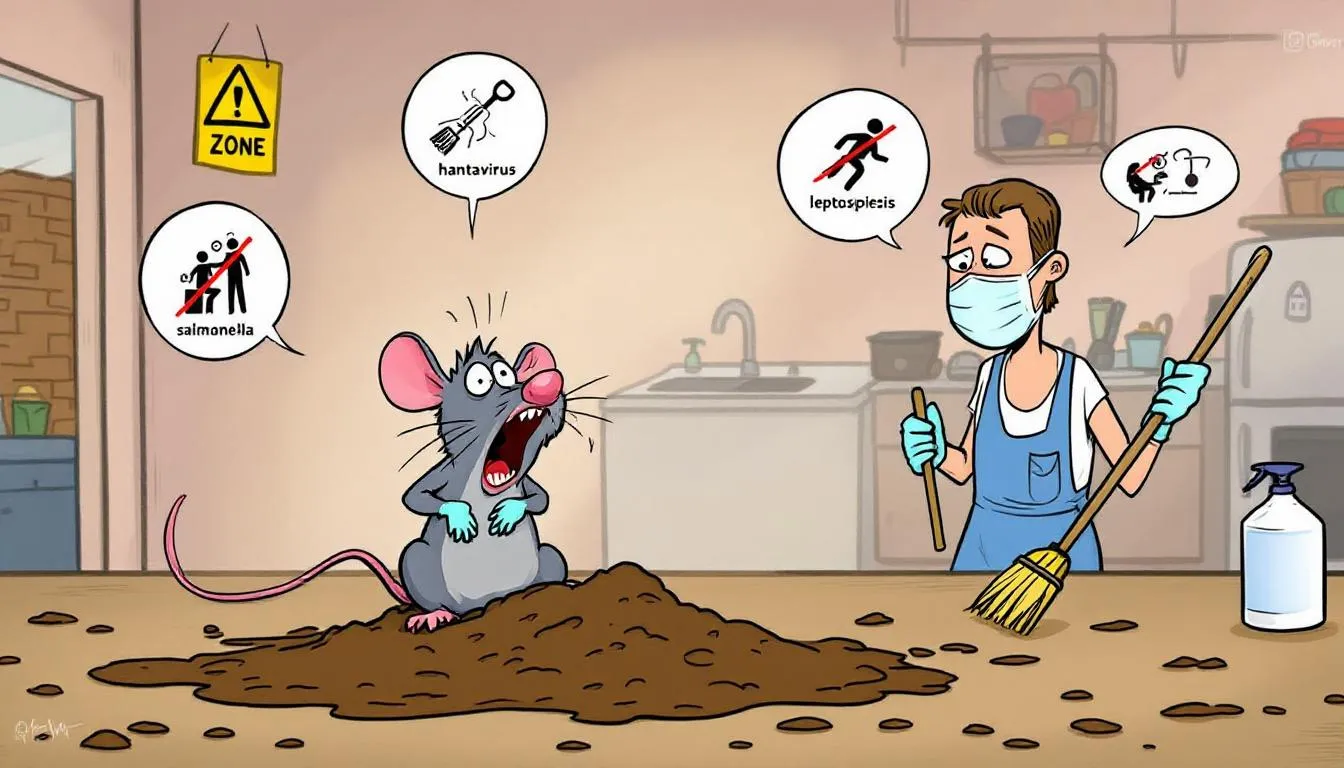
Rat droppings can transmit serious many diseases spread like hantavirus pulmonary syndrome, leptospirosis, rat bite fever, hemorrhagic fever, and rodent borne diseases. Symptoms of hantavirus infection include fever, fatigue, and difficulty breathing, particularly associated with exposure to dried rat droppings.
Rodent urine and feces, including rat feces and rodent feces, can survive in the environment for hours to days, posing ongoing health risks. Diseases can be transmitted by inhaling dust contaminated by rat urine, rodent poop, or droppings.
Understanding these health implications highlights the importance of proper handling and cleaning of rat droppings to protect your health.
When to Call Professional Pest Control
Professional intervention is sometimes necessary for severe rodent infestations. Visible rat droppings, especially in clusters, indicate a serious problem. Bad odors, particularly from decomposing rats, often signal an infestation that requires expert help.
Unusual noises like hissing or gnawing sounds at night may indicate a rat problem that needs expert pest control. If preventive measures fail and the problem persists, contact a professional pest control service.
Summary
Addressing rat droppings promptly and safely is crucial for protecting your health and home. Identifying droppings, using proper safety gear, and following a thorough cleaning process are essential steps. Preventive measures and effective use of traps can help keep your home rodent-free. However, in severe cases, professional pest control may be necessary.
Taking these steps will ensure a safer, healthier living environment for you and your loved ones. Don’t wait for the problem to escalate—act now to get rid of rats and prevent future infestations.
Frequently Asked Questions
How can I identify rat droppings?
To identify rat droppings, look for droppings that are about 19mm long, dark brown, and have a shape similar to grains of rice with blunt ends. Recognizing these characteristics can help you determine the presence of rats.
What safety gear do I need to clean rat droppings?
To safely clean rat droppings, it is essential to wear rubber gloves, a filter mask, goggles, long-sleeved clothing, and rubber boots to protect against potential diseases.
How should I dispose of dead rodents?
To dispose of dead rodents safely, wear rubber gloves and a dust mask. Place the rodent in a sealed plastic bag, double-bag it, and dispose of it in a covered trash can. This method minimizes health risks and ensures proper sanitation.
What are the health risks associated with rat droppings?
Exposure to rat droppings poses significant health risks, including the transmission of diseases such as hantavirus pulmonary syndrome and leptospirosis. It is crucial to handle rat droppings with care to prevent these serious health threats.
When should I call professional pest control?
You should call professional pest control if you observe visible rat droppings, detect unpleasant odors from decomposing rats, hear unusual noises, or if your preventive measures are ineffective. Taking prompt action can help manage the situation effectively.
Latest news
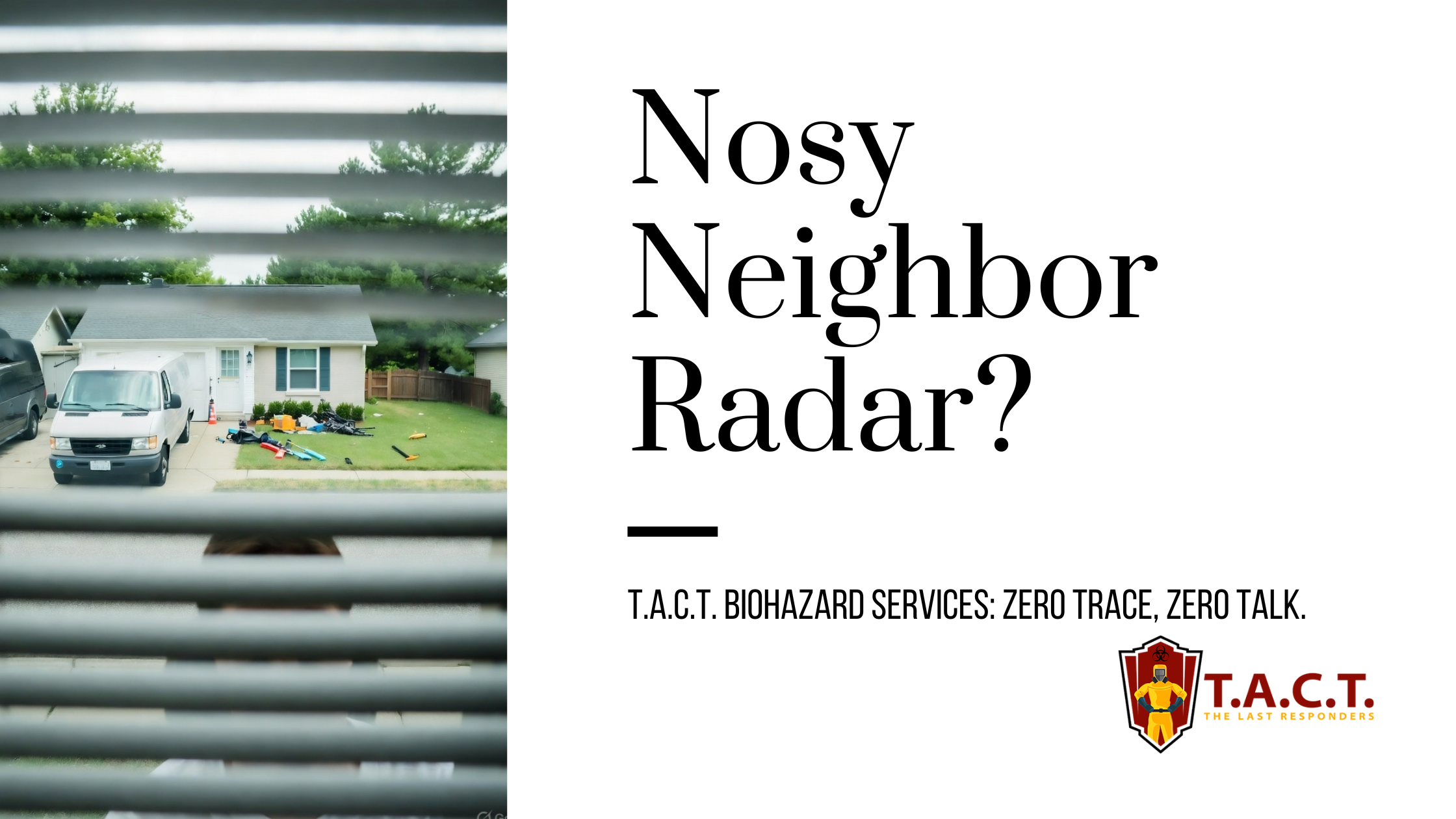
Nosy neighbors peeking? T.A.C.T. North Atlanta offers discreet biohazard remediation for rodent infestations, mold, hoarding, and more. Unmarked vehicles, quiet experts, full privacy—24/7 service at 470-781-4775.
Read More